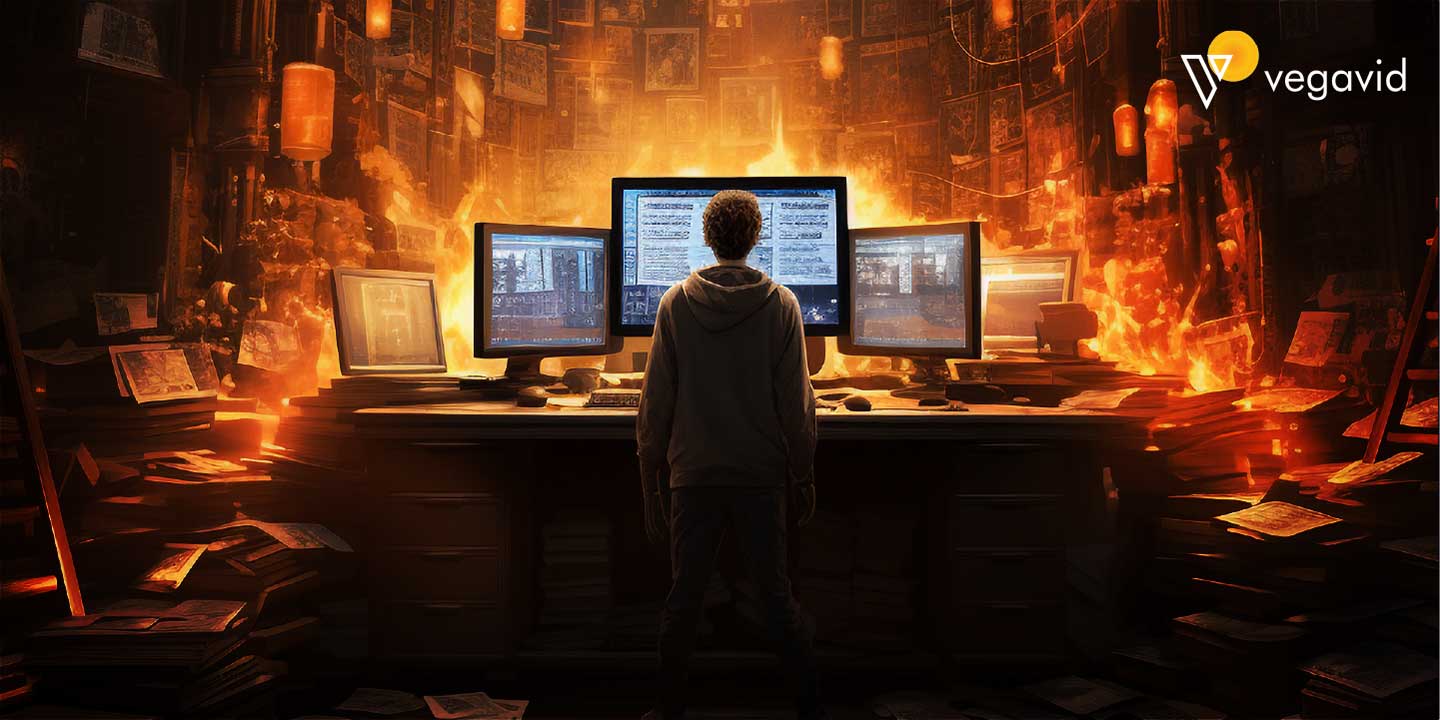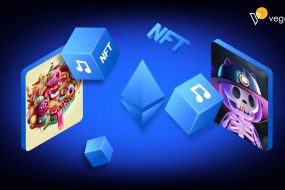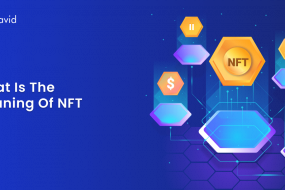
Navigating the burgeoning world of Non-Fungible Tokens (NFTs) entails understanding the intricacies of minting—an essential process transforming digital assets into unique, verifiable tokens. The process, however, encompasses various costs and considerations that creators and collectors must comprehend. This ultimate guide aims to unravel the enigma of NFT minting costs, shedding light on the multifaceted expenses associated with this transformative process. Minting an NFT involves more than just creating a digital token; it encompasses technical, platform-related, and often unforeseen expenses. This guide will delve into the nuanced breakdown of these costs, exploring the platforms available for minting, gas fees, intelligent contract expenses, royalties, and additional charges that could impact the overall cost structure.
Understanding these intricacies becomes indispensable for creators aiming to mint their digital creations or collectors seeking to assess the value and potential expenses of acquiring NFTs. Whether a newcomer intrigued by the concept or a seasoned participant in the NFT space, this comprehensive guide serves as a beacon, elucidating the financial landscape of NFT minting costs. Dissecting and explaining these factors equips individuals with the knowledge necessary to navigate the realm of NFTs, enabling informed decisions in an ever-evolving and dynamic digital ecosystem.
The Role of NFTs in the New Digital Era
NFTs, or Non-Fungible Tokens, have become incredibly popular in recent times. As the digital world evolves, NFTs play a crucial role in interacting with art, media, and online communities. By attaching unique digital signatures to items like photos, videos, audio, and more, NFTs allow these items to be traded or sold as individual assets on online marketplaces. NFTs have created new economies and transformed how creators share and monetize their work. While the concept of digital scarcity provided by blockchain technologies powering NFTs is fascinating, minting or creating your first NFT also comes with certain costs. Let’s discuss the costs associated with minting NFTs on different blockchains and provide tips to optimize these costs. We aim to give readers a comprehensive understanding of the overall NFT minting process and expenses on popular networks like Ethereum and Solana. So whether you are an artist looking to sell your creations as NFTs or a collector hoping to build your portfolio, this guide will help you understand the basic economics.
In the ever-evolving digital landscape, Non-Fungible Tokens (NFTs) have emerged as a revolutionary force, fundamentally reshaping how we perceive, value, and exchange digital assets. Their role in the new digital era transcends mere ownership; it embodies the intersection of technology, creativity, and economics, heralding a paradigm shift in how we engage with and monetize digital content. At its core, NFTs serve as a cornerstone of authenticity and ownership in the intangible realm of the internet. By leveraging blockchain technology, they provide an immutable and transparent record of ownership, granting creators and collectors tangible proof of digital ownership. This innovation has unlocked many opportunities across diverse domains, from art and music to gaming, collectibles, and even real estate, offering a novel way to tokenize and trade digital assets. NFTs have democratized access to art and creativity, empowering artists and creators by allowing them to monetize their digital works directly, circumventing traditional gatekeepers. This newfound ability to tokenize digital creations ensures creators receive fair compensation for their art. It fosters a direct connection between creators and their audiences, fostering a new era of community-driven patronage.
Moreover, NFTs have redefined the concept of ownership, transcending physical limitations. They enable the tokenization of virtually any digital asset, assigning unique value and ownership to items previously deemed non-monetary, such as tweets, GIFs, or virtual real estate in the metaverse. It opens avenues for creating digital economies, where value is ascribed to digital assets based on scarcity, utility, and demand.
In the broader scope of the digital era, NFTs represent a shift towards a more decentralized and inclusive economy, disrupting traditional notions of ownership and commerce. Their role extends beyond a mere transactional tool; they embody a cultural shift, sparking conversations about digital ownership, intellectual property rights, and the evolution of digital economies. As we navigate this new digital epoch, NFTs stand at the forefront, catalyzing innovation and reshaping how we define, value, and interact with digital assets—a testament to their pivotal role in shaping the new digital culture and commerce era.
Understanding Gas Fees for Ethereum NFTs
The most widely used blockchain for minting and trading NFTs currently is Ethereum. However, high transaction fees or ‘gas’ on the Ethereum network have posed challenges for many users. Gas refers to the price paid to miners for processing and recording transactions on the Ethereum blockchain. Gas fees fluctuate greatly depending on network demand and congestion. During periods of high traffic, gas fees can shoot up significantly.
The basic steps for mining an NFT on Ethereum are:
1. Creating an ERC-721 or ERC-1155 smart contract: This step involves deploying an NFT smart contract to the Ethereum network, which will define the standard and functionality of the NFT collection. Generating and deploying this contract requires paying gas.
2. Minting individual NFTs: After the smart contract is live, individual NFTs can be minted by calling functions defined in the contract. Stamping each NFT also needs to be paid for in gas.
3. Listing NFTs for sale: For selling NFTs on marketplaces like OpenSea, an approval transaction is needed, followed by a listing transaction. These individual transactions attract gas fees as well.
During periods of low network usage, average gas fees for the above steps may range from $50-150. However, during periods of high traffic, these costs can surge significantly – sometimes exceeding hundreds of dollars per transaction.
Optimizing Gas Costs for Ethereum NFTs
While Ethereum remains the most popular network due to its broad user base and range of supporting applications, its high gas fees pose issues for many artists and collectors. Here are some tips to optimize gas costs:
- Mint in bulk: Instead of minting NFTs individually, minting them in size using a single transaction to reduce overall gas costs.
- Use off-peak times: Conduct minting, listing, and transactions during non-congested periods generally observed on weekends or late nights.
- Adjust gas limit/prices: Transactions can be processed faster by increasing gas prices or limiting in Ethereum wallets.
- Use layers-2 solutions: Platforms like ImmutableX and Polygon offer cheaper transactions by operating as layers over the Ethereum network.
- Switch to other networks: Chains like Solana, Tezos, etc, have much lower transaction costs, though they currently lack apps like OpenSea.
With the right strategies, total gas costs for minting & listing an NFT collection of 50-100 NFTs can be optimized from thousands of dollars down to the $200-500 range on Ethereum.
Choosing Alternative Blockchains for Cheaper NFT Minting
While Ethereum currently provides the most significant community and diverse applications, high gas costs pose entry barriers. Hence, several new blockchains have emerged as alternatives offering near-zero gas fees for NFT minting operations. Here are some popular options:
Solana is a Proof-of-Stake blockchain touted as the fastest in the world, supporting over 50,000 transactions per second. Key benefits are negligible transaction fees well below a single cent and speedy confirmation times of 400ms. This makes Solana an ideal choice for artists and creators looking to minimize costs. Leading NFT marketplaces like Solsea are explicitly built for Solana NFTs. The total cost for minting an essential collection of 50 NFTs on Solana is less than a dollar.
Tezos is another energy-efficient Proof-of-Stake network well-known for supporting NFTs. It has seen growing adoption from creators and mainstream brands/sports leagues. Average gas costs for minting on Tezos are around $0.002 per transaction, making a 50 NFT collection cost less than $1. Popular marketplaces include HicEtNunc.
Flow is a blockchain developed by Dapper Labs, the creators of CryptoKitties and NBA Top Shot. It focuses primarily on supporting customizable and mass-producible NFT projects. Gas fees on Flow are nominal, enabling creators to experiment freely with different concepts. NFT capsules can be minted for fractions of a cent each.
While these alternative chains have yet to match Ethereum’s level of developer support and infrastructure, their negligible costs give them an edge for specific use cases – especially mass minting of configurable NFT collections. The future will likely see wider usage across different blockchains.
Other Expenses for NFT Creators Beyond Minting
While variable blockchain transaction fees form a core cost component for NFT projects, there are several other fixed expenses and investment areas creators must also budget for:
- Design & Development: Creating beautiful and engaging strategies and code to enable different functionality and interactivity with the NFTs. This requires developer resources, and their market rates apply.
- Marketing: Promoting the NFT collection across social media, communities, and platforms is crucial for acquiring an initial user base and driving volume. The budget must be allocated for different marketing channels.
- Trading Commissions: Primary sales conducted directly generate maximum revenue. But after happening on secondary markets, many trades charge 8-15% commission per trade.
- Royalties: Setting a royalty percentage (3-10%) ensures lifelong returns for creators on secondary sales. But requires managing royalty wallets and tracking infrastructure.
- Storage: Storing rich media NFTs like images/videos requires hosting at a specific cost; Blockchain Opensea storage is limited.
- Compliance: Complex legal regulations exist around securities issuance, gambling, and other factors depending on project design and locations being targeted. Professional help may be required.
Budgeting for these additional costs realistically requires fundraising through initial offerings or partnerships for large-scale NFT projects to see long-term success and sustainability.
Understanding the Hidden NFT Minting Costs
While variable gas fees or fixed project expenses attached to launching an NFT collection are more apparent, hidden costs are often overlooked during planning, negatively impacting outcomes. Let’s examine a few:
Opportunity Cost of Time
Depending on the scale and complexity of an NFT project, a significant time investment is often required from creators for design, development, marketing, and community management. This represents a high opportunity cost that may offset any short-term financial gains, especially if the creator has other income streams. Proper accounting for potential time expenditures is essential.
Environmental Concerns
The carbon footprint of computationally intensive blockchains like Ethereum has drawn criticisms around the environmental sustainability of certain NFT uses. In the long run, this perception could dent demand from environmentally-conscious buyers if not addressed proactively via technical advancements.
Regulatory Uncertainty
While the innovation of blockchain technologies is generally welcomed, ongoing discussions around the regulation of different use cases like securities issuance can introduce uncertainties. Outcomes may result in new compliance requirements or limitations for specific geographies.
Project Longevity Challenges
Unlike physical collectibles, which have had intrinsic value over decades, the value of digital NFTs depends highly on continued community interest and support architectures. Projects face risks around decreasing engagement or marketplaces shutting down over time.
Accounting for such hidden agenda items upfront equips creators to make informed economic decisions and build resiliency against potential future risks and roadblocks in their NFT ventures. Overall planning and risk mitigation play a significant role in success.
Conclusion
While NFTs offer exciting opportunities for creators to leverage blockchain technologies and build thriving communities around their work, the associated costs require prudent consideration. Gas fees on Ethereum and other blockchains remain the most variable cost depending on network congestion and the size of NFT collections. But there are also fixed recurring costs around design, development, marketing, and storage to budget for. Many hidden costs around time investments, regulations, and project sustainability also impact outcomes if overlooked. With the right strategies to optimize gas usage, spend wisely on other budgets, and mitigate risks, the true potential of NFT ventures can be unlocked sustainably for all stakeholders.











